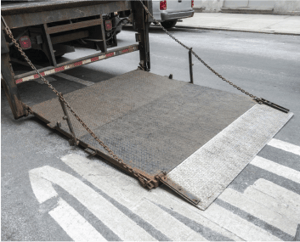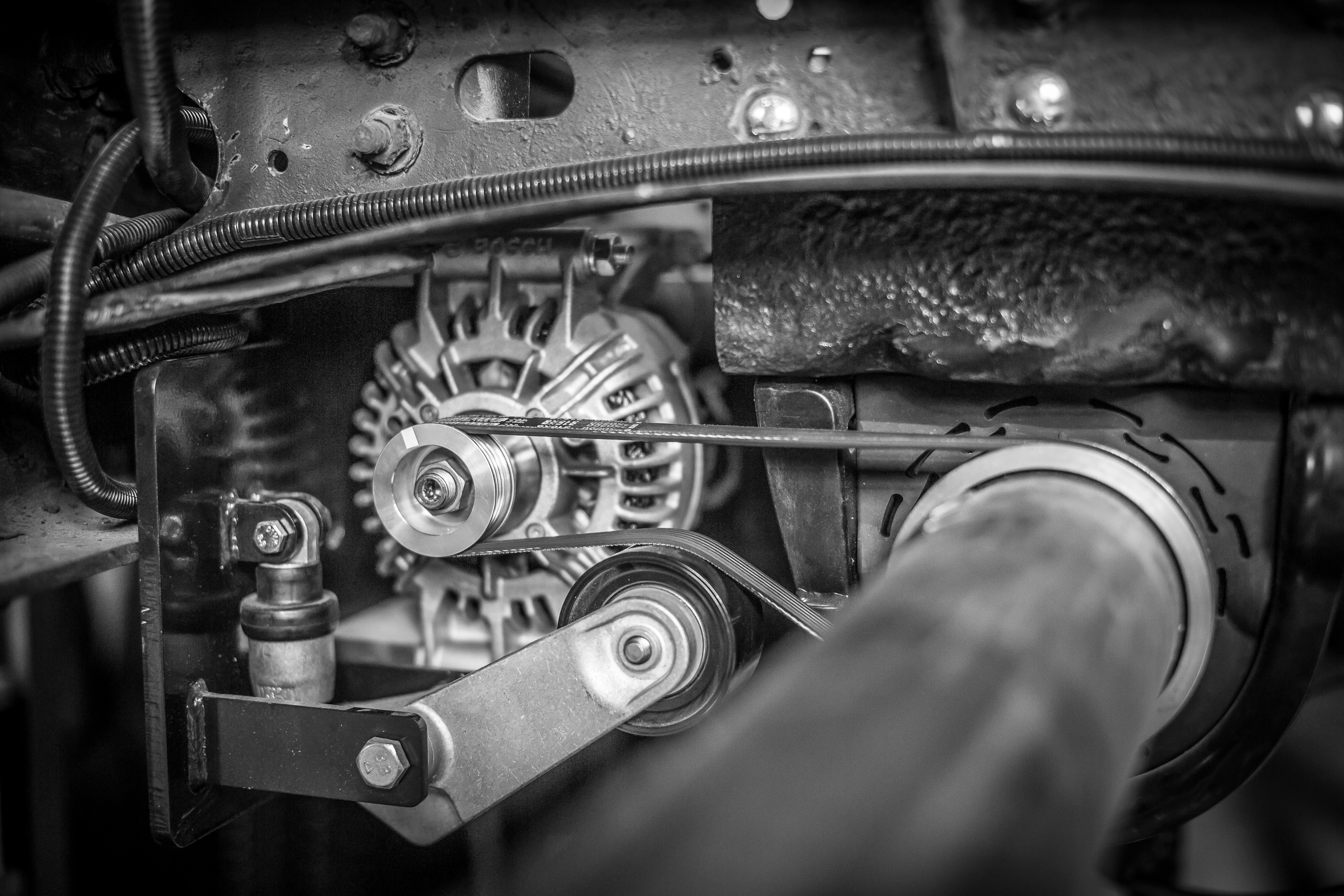5 Essential Practices to Improve Your Truck’s Liftgate Performance
by Craig Nathan | May 14, 2020 | Liftgates, Preventative Maintenance, Uptime, RelGen, Battery Recharge, Voltage Loss, Anti-Idle | 0 Comments
 Battery recharging issues are well known among fleets using trucks with liftgates. Often there is not enough power in the liftgate batteries to carry out a full duty cycle without engine idling. Blackburn Energy's RelGen is designed to deliver a fast and full recharge to avoid engine idling, but here are other helpful practices to keep your batteries in good health.
Battery recharging issues are well known among fleets using trucks with liftgates. Often there is not enough power in the liftgate batteries to carry out a full duty cycle without engine idling. Blackburn Energy's RelGen is designed to deliver a fast and full recharge to avoid engine idling, but here are other helpful practices to keep your batteries in good health.
Dead Batteries or Engine Idling?
A liftgate truck driver may make between 10-15 stops per day and operate the gate 6-10 times per stop. Especially in urban areas, each stop may be as close as 1 mile apart. This leaves little time for the engine alternator to recharge the batteries. As a result, the liftgate batteries may become completely depleted by the end of the day, or even sooner.
For fleets without a dedicated charging solution like RelGen, inefficient and costly engine idling is necessary to have enough power to operate the liftgate multiple times throughout the day. Anti-idling laws and regulations can put fleets in tricky dilemmas: Do you comply with the laws and risk problems with your trucks or do you risk fines and factor in additional maintenance and fuel costs?
Low Voltage Leads to Liftgate Failure
Anywhere from 60 to 75 percent of issues with liftgates are electrical, with the majority of these issues being tied to low voltage. Chronic low-voltage can cause your gate to operate slowly which lengthens delivery times. It can also cause premature failure of solenoid switches, motors and batteries.
Since the liftgate batteries are tied to your starter batteries, when they die, so does your truck. This is the dreaded dead truck, also known as a ‘stuck truck’. The dead truck may be blocking traffic, a loading dock or zone, or stuck in a lot where other trucks are trying to get in and out etc. Either a rescue vehicle needs to be sent out to recharge batteries to the point when the engine can turn over or your truck will need an expensive tow. Fleet owners need to pull the truck out of service, resulting in disrupted supply chains.
5 Practices To Increase Uptime and Extend Liftgate Life
Preventative maintenance on your liftgates are important to your business. Short of having a dedicated charging system like RelGen on your trucks, you can do a number of things to help yourself out here:
-
Make sure you have the right cabling on the truck
Use of improperly sized cables is a common mistake that can make liftgate charging issues worse. There are two factors to consider when determining proper cable size - cable width and cable length. Smaller gauge cables resist more flow of electrical charge from the engine alternator, as do long cables, limiting the amount of charge that can reach the batteries and making voltage problems worse. The longer the run of cable, the larger your cable gauge should be, otherwise you end up with large voltage drops and excess heat in your cabling.
Blackburn recommends using 3/0 AWG to connect your starter batteries to your liftgate motor or liftgate batteries to increase the flow of electrical charge from the engine alternator. Check your cabling to see if it's properly sized to handle your liftgates power requirements. -
Check all of your terminals and connections
It is good practice to check your electrical system for loose connections and corrosion every 3-6 months. Ensure all connections are tight and visually inspect all terminals for any signs of corrosion. Either of these can impede the flow of electricity to the batteries.
It is also important to check for exposed wire - a gap can develop between the lug and the cable jacket allowing moisture to get into the cable’s copper stranding, leading to internal corrosion. And most importantly, make sure all your grounds are good. -
Use a multimeter to check for voltage drop
If your liftgate is experiencing operational issues, have your technicians check the electrical system for the source of the problem. The circuit will need to be energized in order to perform this voltage drop check. Have one technician operate the liftgate while another technician places the multimeter probes across each part of the circuit. The voltmeter will measure the voltage drop across each section and help determine which cable or terminal is causing the problem. -
Load test the batteries
Test the health of the batteries that are powering the liftgate with a load tester or battery charging device often and replace them at the first sign of trouble. If you don’t have a dedicated charging system source you should anticipate that your liftgate batteries experience capacity 'walkdown' resulting in premature battery failure. Chronic under-charging will shorten the life of your batteries. At the end of a battery’s life you will experience more mechanical breakdowns. Load testing batteries and replacing unhealthy ones earlier will help to prevent breakdowns. -
Check the solenoids on the liftgate
If the batteries are consistently running at a lower voltage, it can wear out the hydraulic power equipment on the liftgate quicker. The motors can overheat and the solenoids can chatter, shortening the operational life of both of these essential liftgate components. Without a dedicated charging system, you should check the solenoids on the liftgate itself because they can damage from chronic low voltage in the batteries.
Conclusion
If maintaining fully operational liftgates on your trailers or box trucks is essential to your business, adopting some of these suggestions can help keep your liftgates operating at peak performance. If you are looking for a total battery recharging solution, RelGen offers the fastest recharging capabilities on the market today. Learn more about how RelGen works here.
Thanks for reading! If you have any questions or comments, drop us a line below.
Most Popular
Categories
- RelGen (18)
- Anti-Idle (14)
- Charging Solutions (13)
- Battery Recharge (11)
- Electric APU (10)
- Liftgates (10)
- Preventative Maintenance (7)
- Voltage Loss (6)
- DC/DC converters (4)
- Driver Retention (4)
- Uptime (4)
- fuel savings (3)
- 48V (2)
- Blackburn Team (2)
- Solar Panels (2)
- Consulting (1)
- DOT compliance (1)
- Espar Airtronic D2 Diesel Fired Air Heater (1)
- Financing (1)
- Hardware as a Service (1)
- Power Wall (1)
- alternators (1)
- data (1)
Archives
- October 2020 (4)
- November 2020 (4)
- May 2020 (3)
- September 2020 (3)
- March 2021 (3)
- April 2021 (3)
- July 2020 (2)
- August 2020 (2)
- January 2021 (2)
- June 2020 (1)
- July 2021 (1)
- August 2021 (1)
- October 2021 (1)
- January 2022 (1)
- February 2022 (1)
- March 2022 (1)
- June 2022 (1)
- October 2022 (1)
- January 2024 (1)
- March 2024 (1)
- May 2024 (1)
- September 2024 (1)











